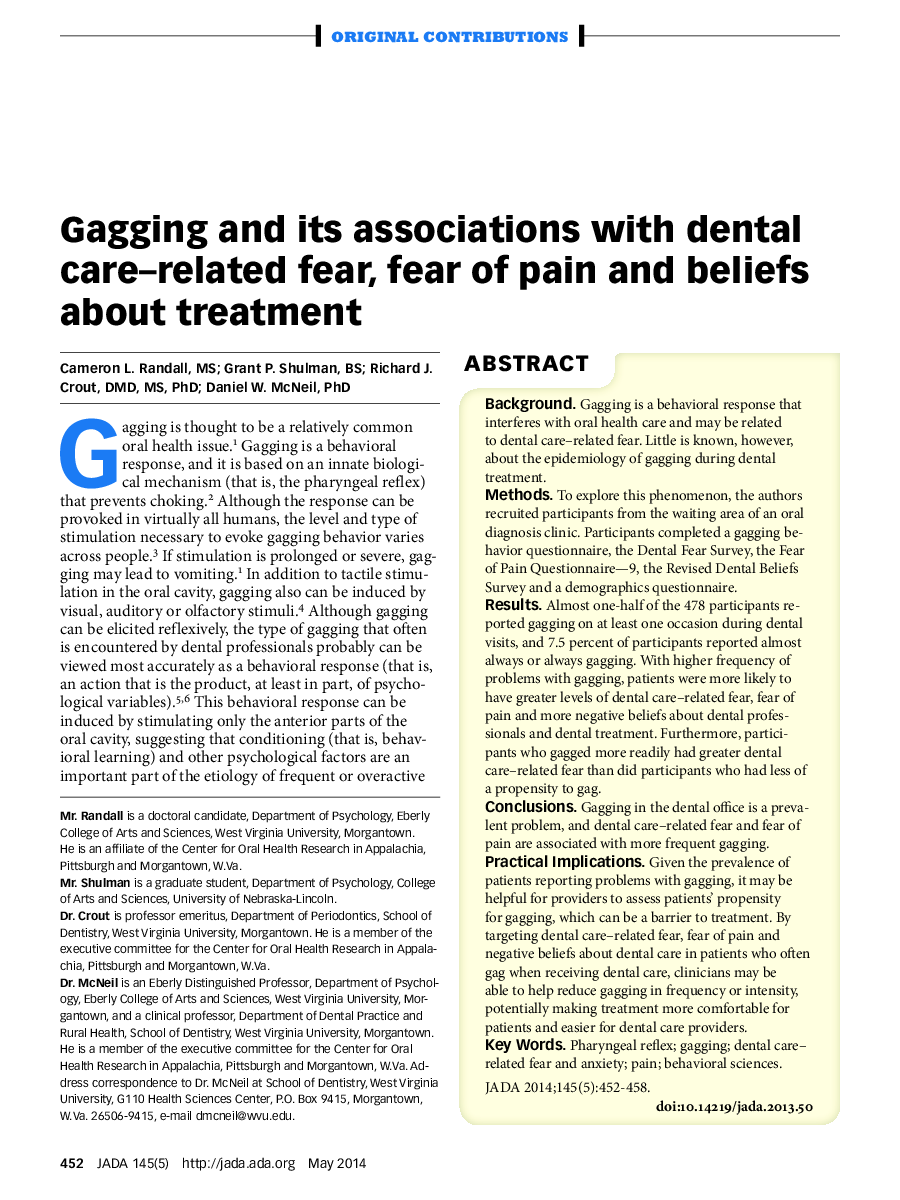| Article ID | Journal | Published Year | Pages | File Type |
|---|---|---|---|---|
| 3136857 | The Journal of the American Dental Association | 2014 | 7 Pages |
ABSTRACTBackgroundGagging is a behavioral response that interferes with oral health care and may be related to dental care–related fear. Little is known, however, about the epidemiology of gagging during dental treatment.MethodsTo explore this phenomenon, the authors recruited participants from the waiting area of an oral diagnosis clinic. Participants completed a gagging behavior questionnaire, the Dental Fear Survey, the Fear of Pain Questionnaire—9, the Revised Dental Beliefs Survey and a demographics questionnaire.ResultsAlmost one-half of the 478 participants reported gagging on at least one occasion during dental visits, and 7.5 percent of participants reported almost always or always gagging. With higher frequency of problems with gagging, patients were more likely to have greater levels of dental care–related fear, fear of pain and more negative beliefs about dental professionals and dental treatment. Furthermore, participants who gagged more readily had greater dental care–related fear than did participants who had less of a propensity to gag.ConclusionsGagging in the dental office is a prevalent problem, and dental care–related fear and fear of pain are associated with more frequent gagging.Practical ImplicationsGiven the prevalence of patients reporting problems with gagging, it may be helpful for providers to assess patients' propensity for gagging, which can be a barrier to treatment. By targeting dental care–related fear, fear of pain and negative beliefs about dental care in patients who often gag when receiving dental care, clinicians may be able to help reduce gagging in frequency or intensity, potentially making treatment more comfortable for patients and easier for dental care providers.
